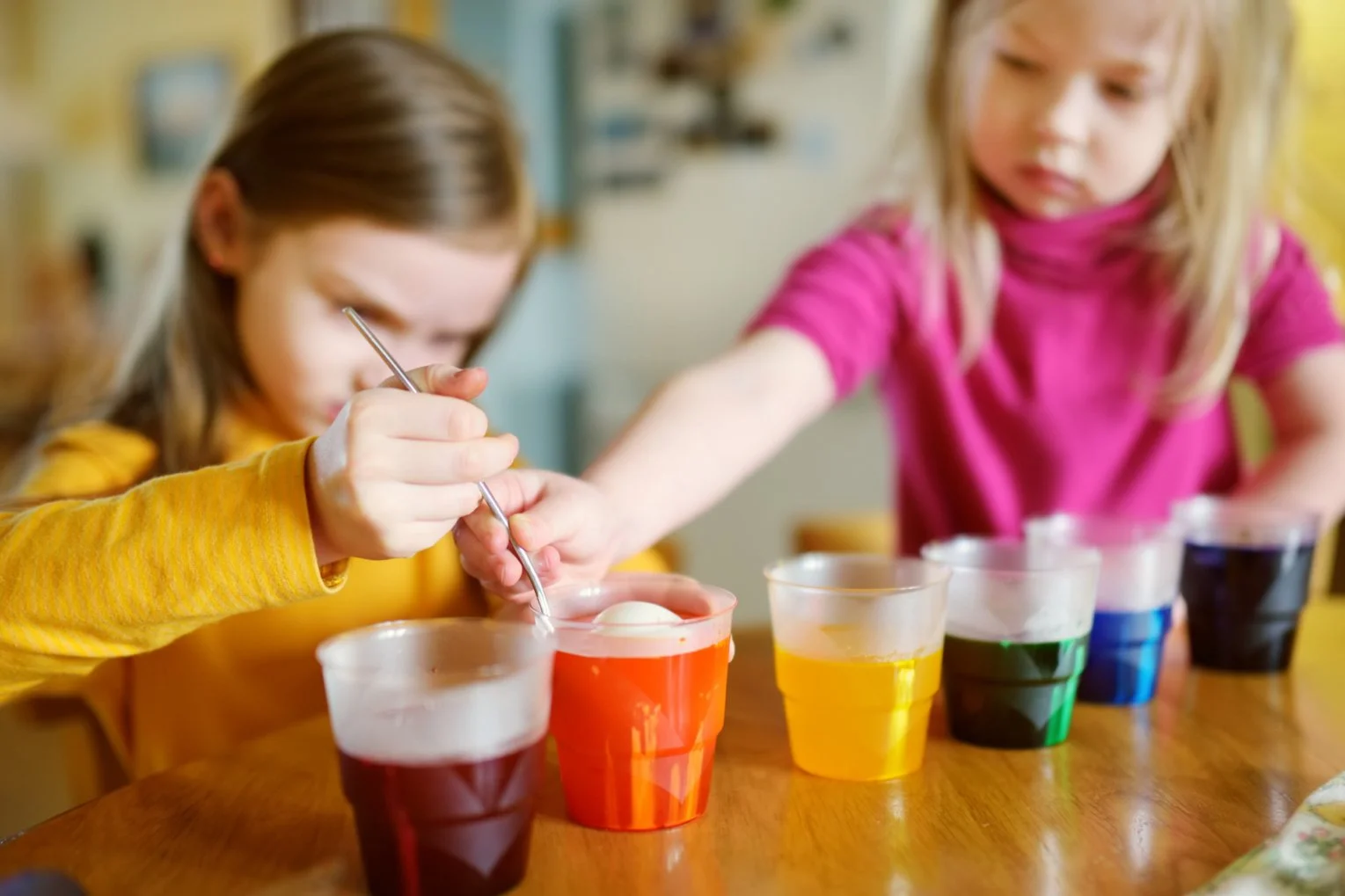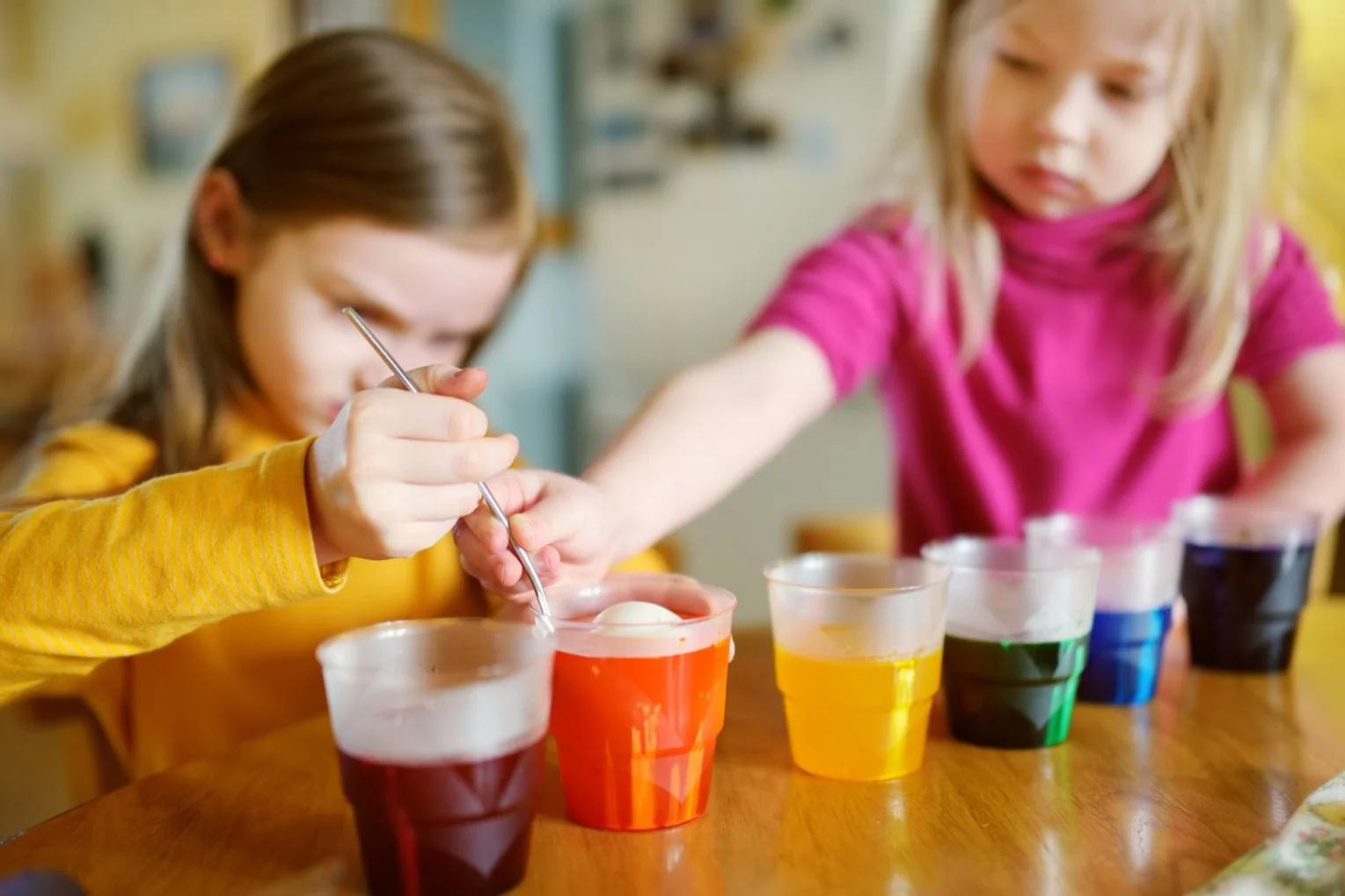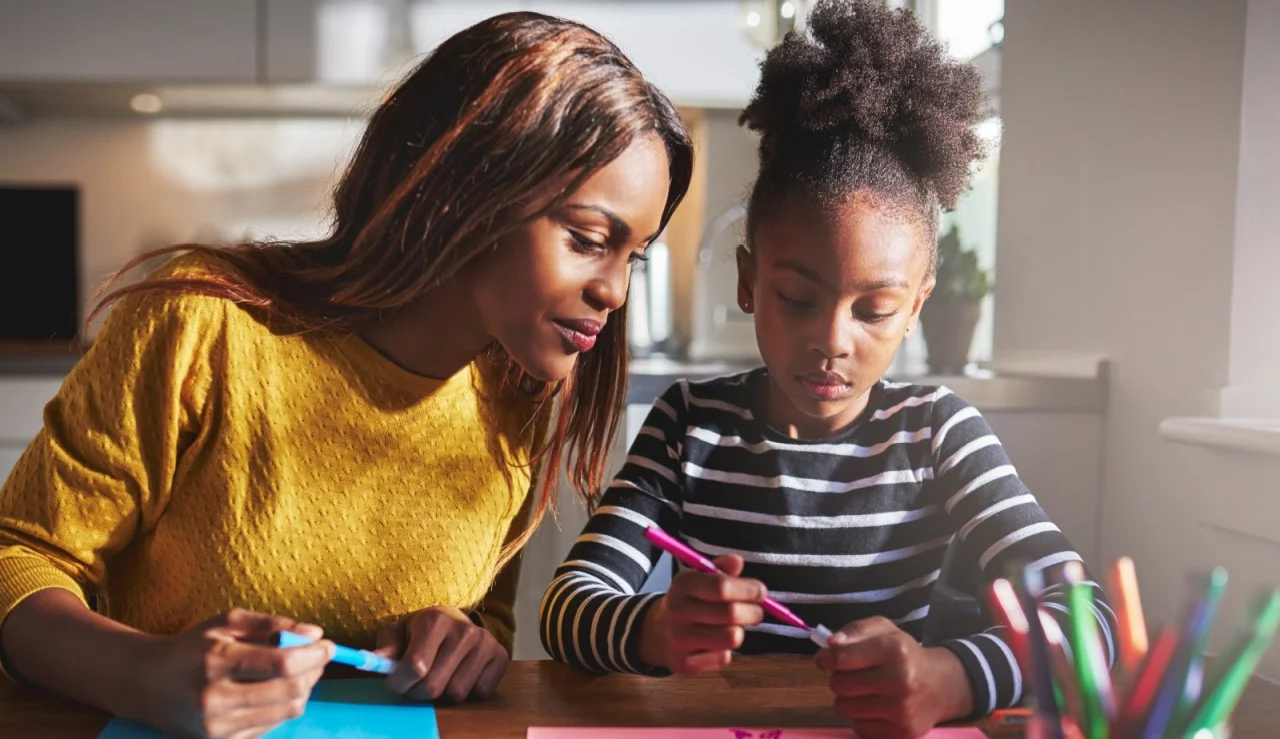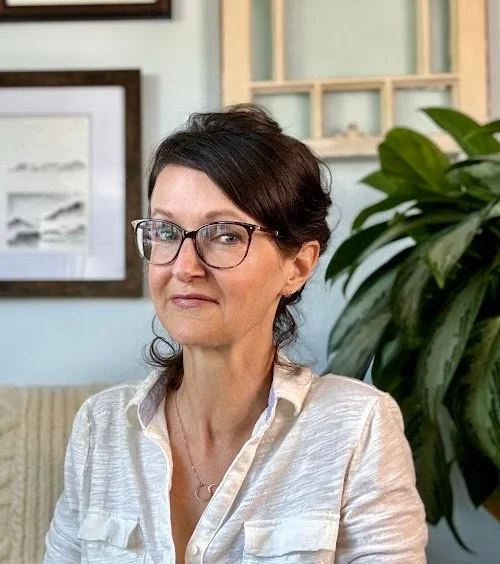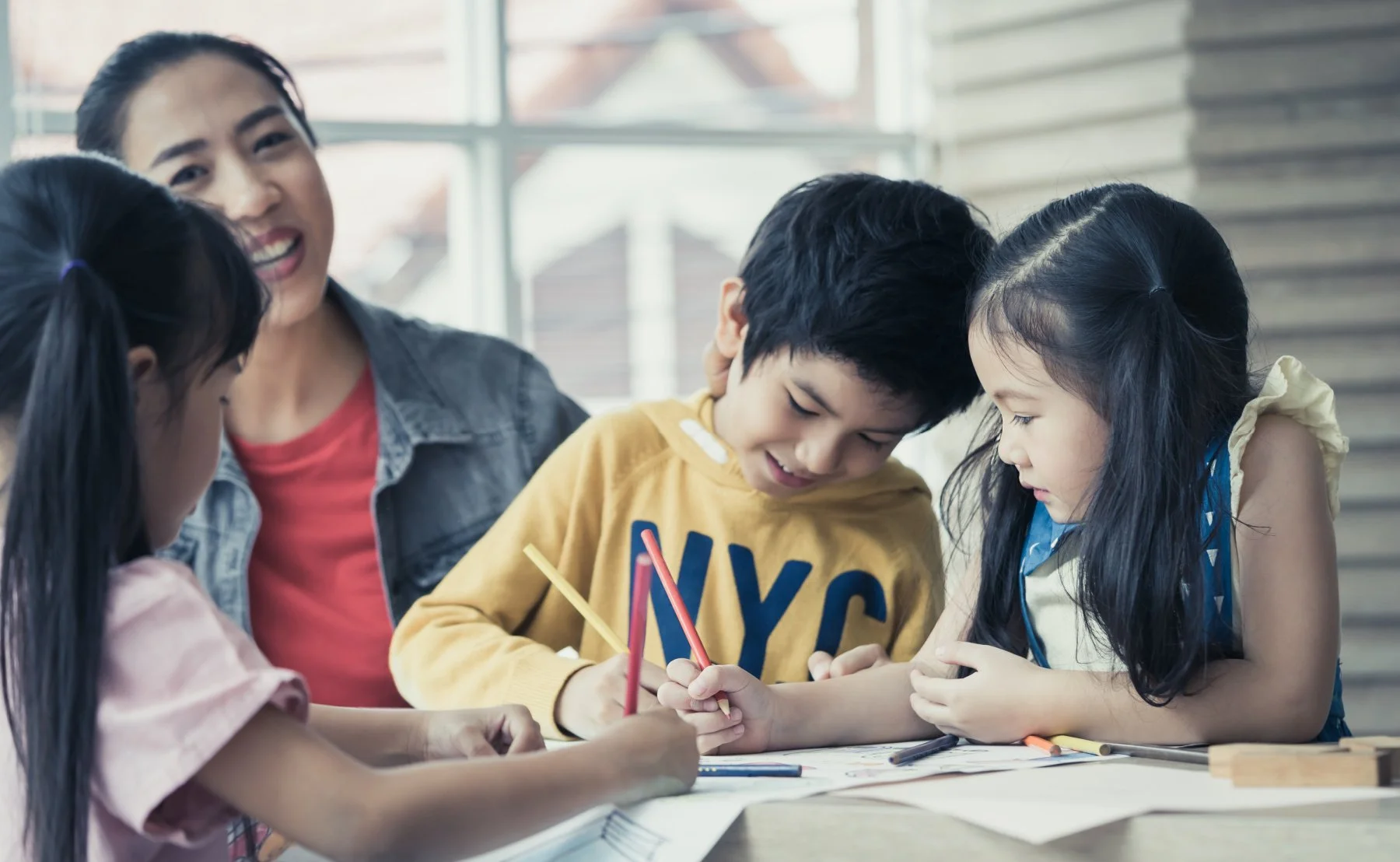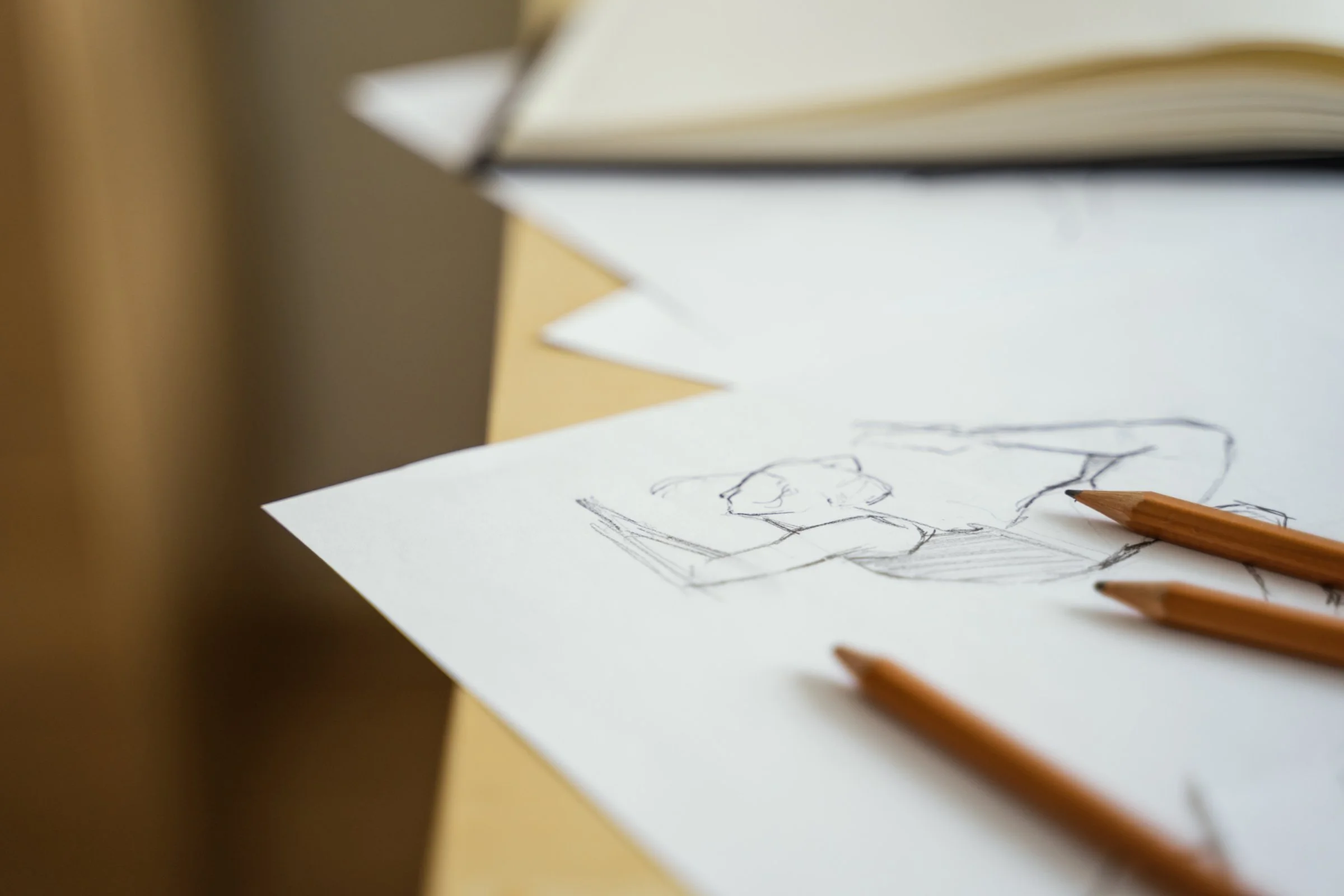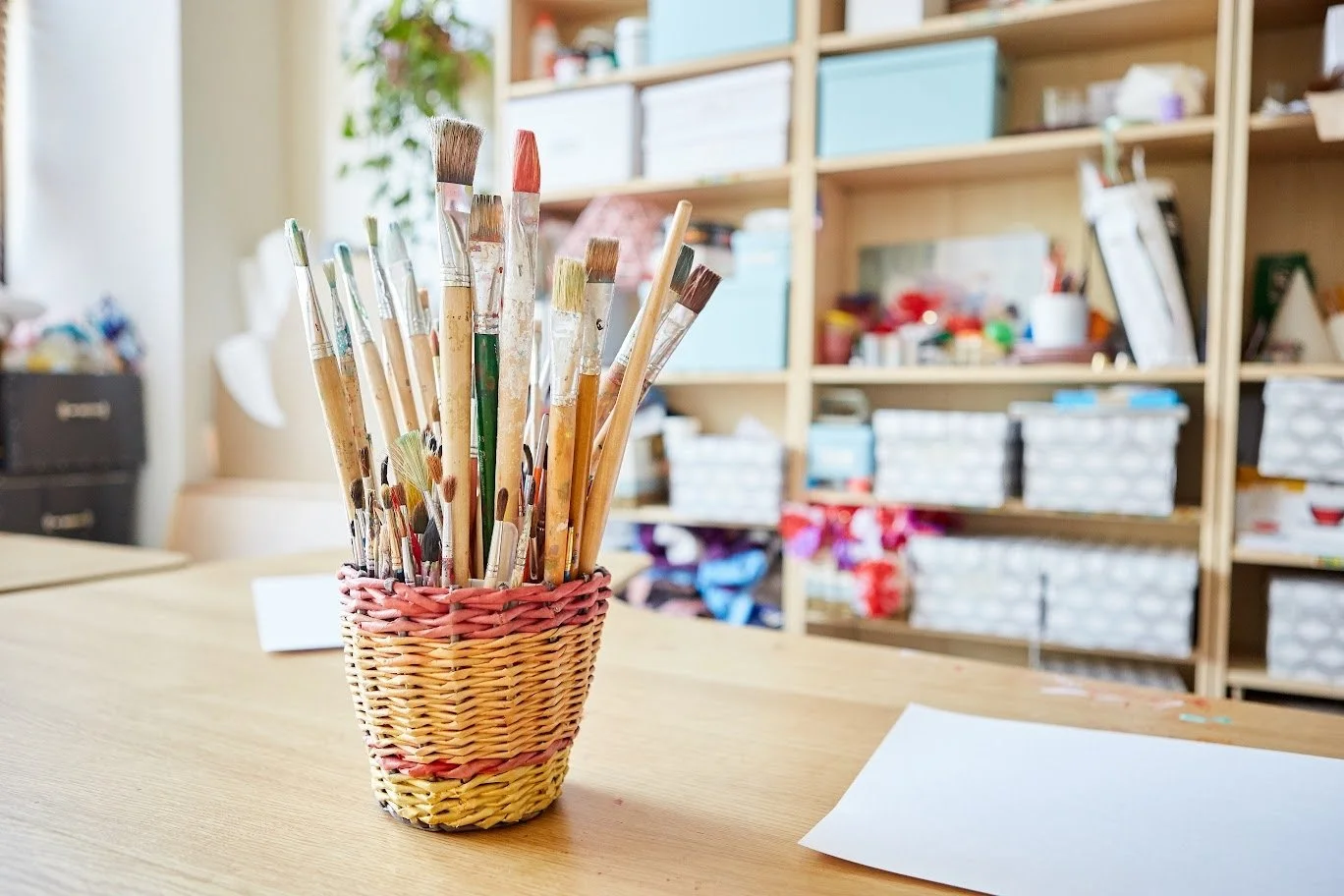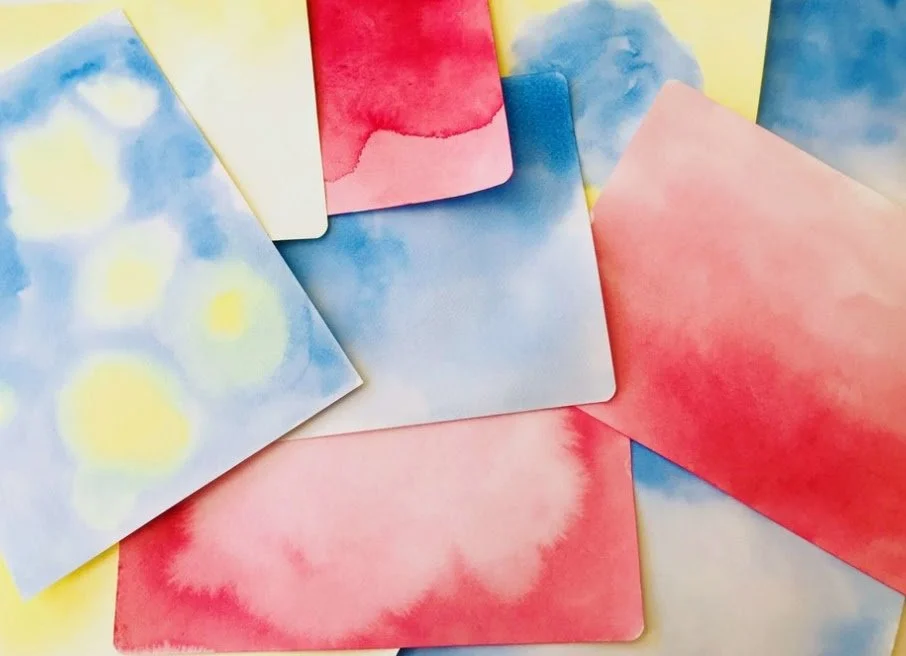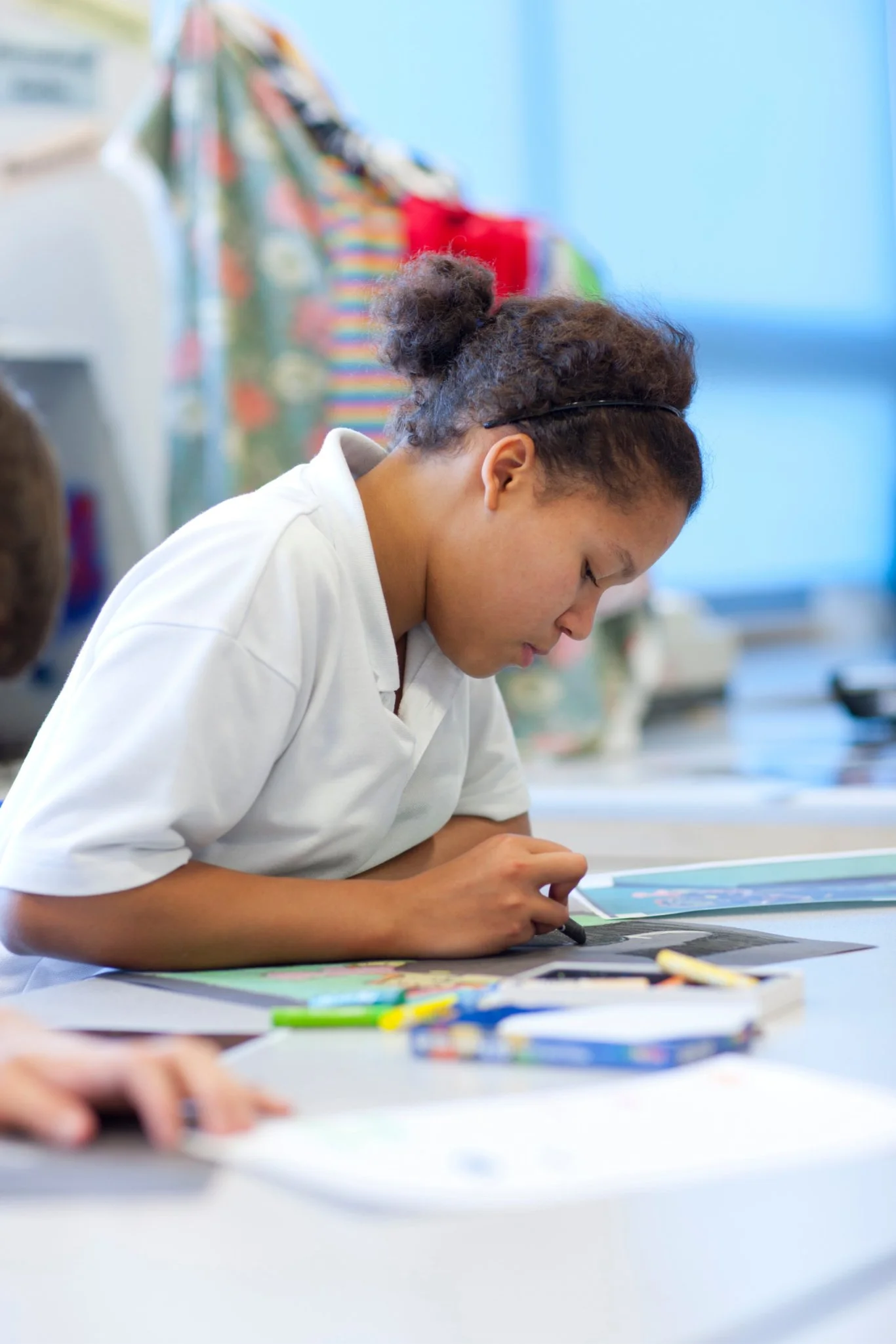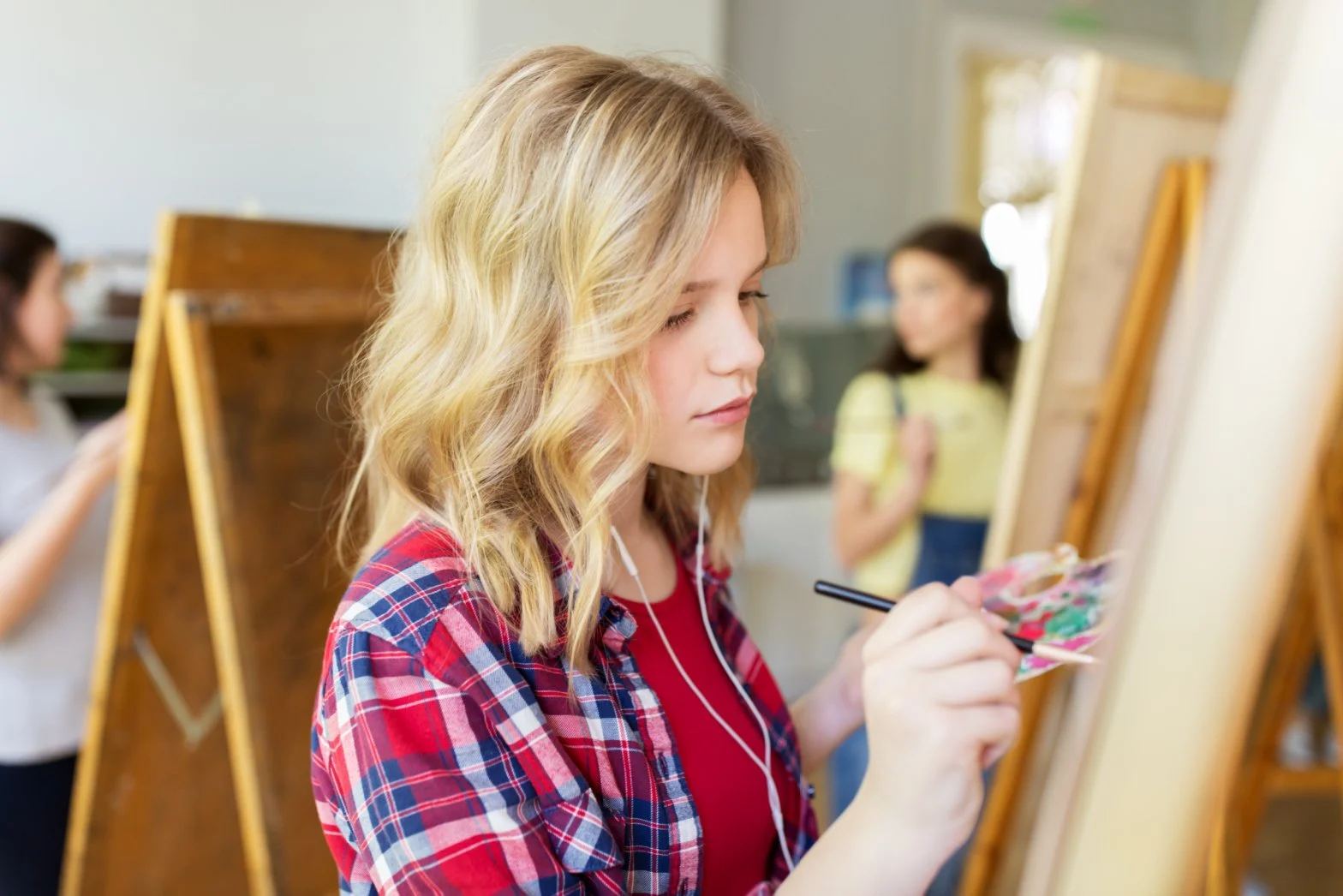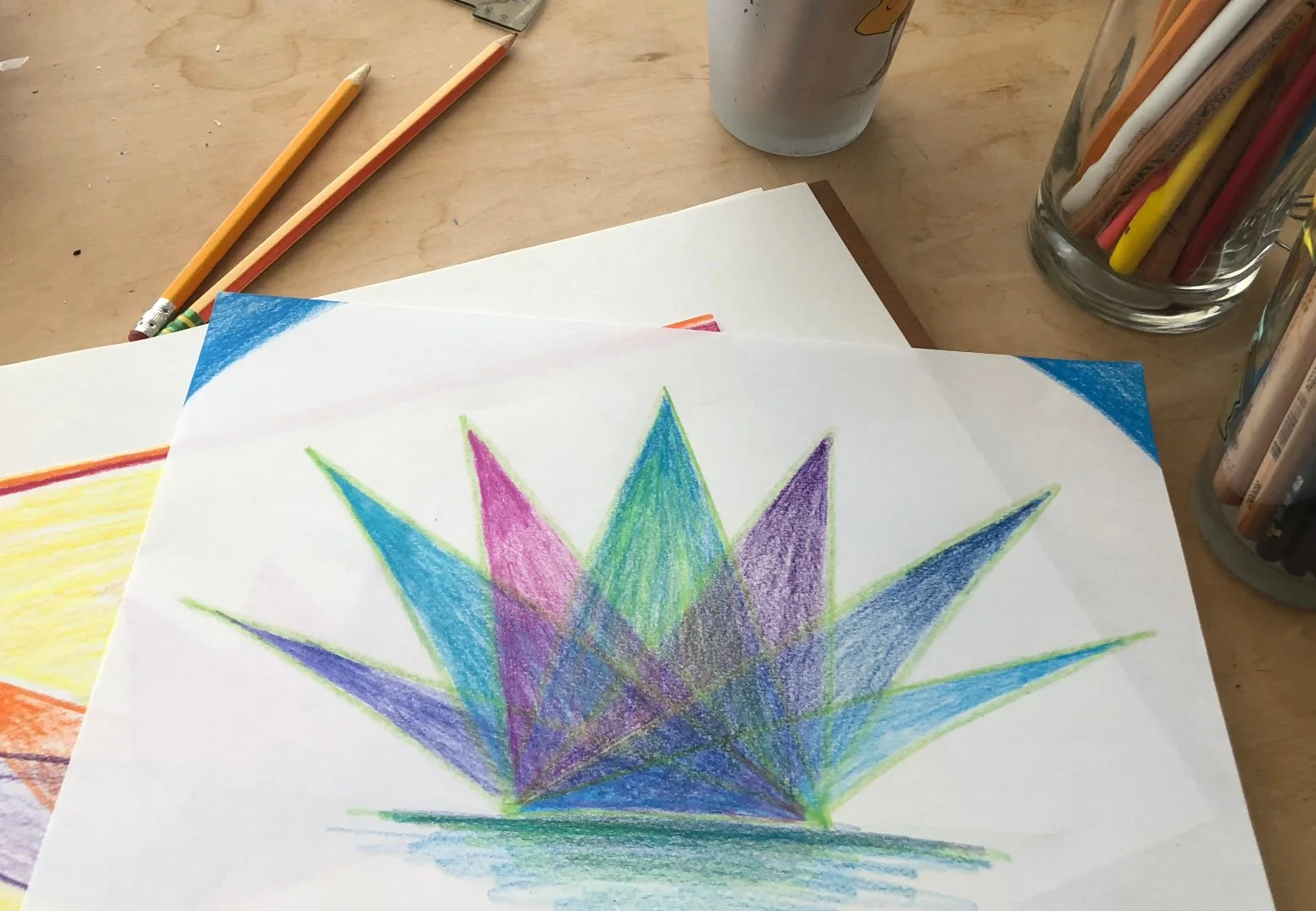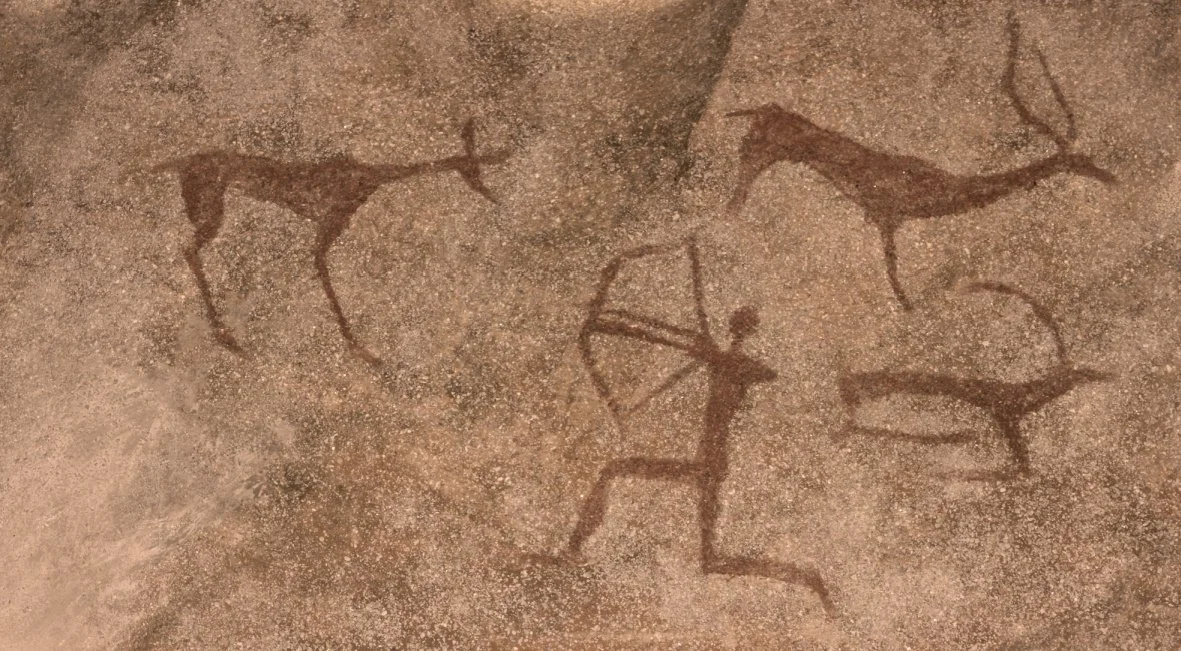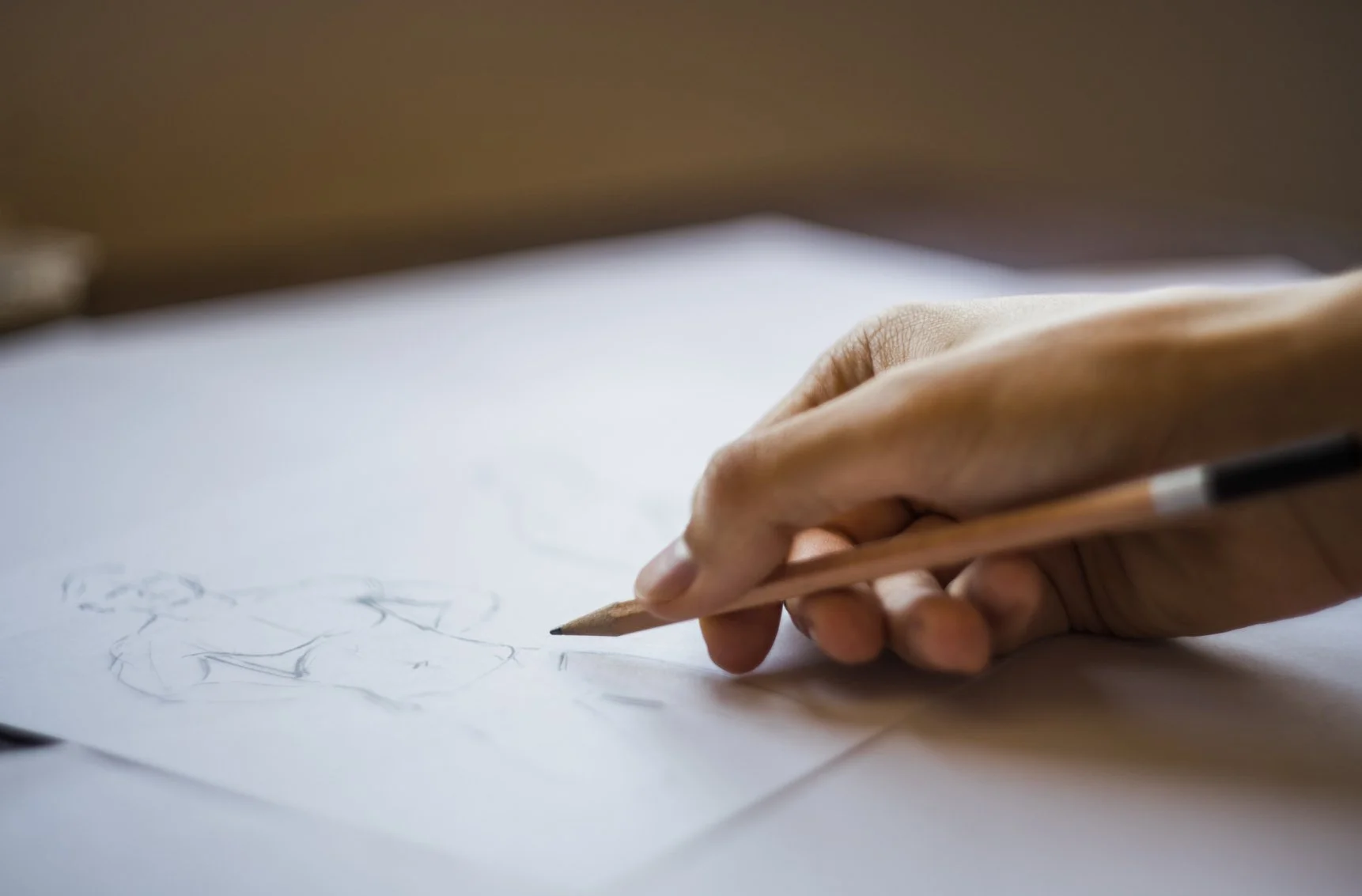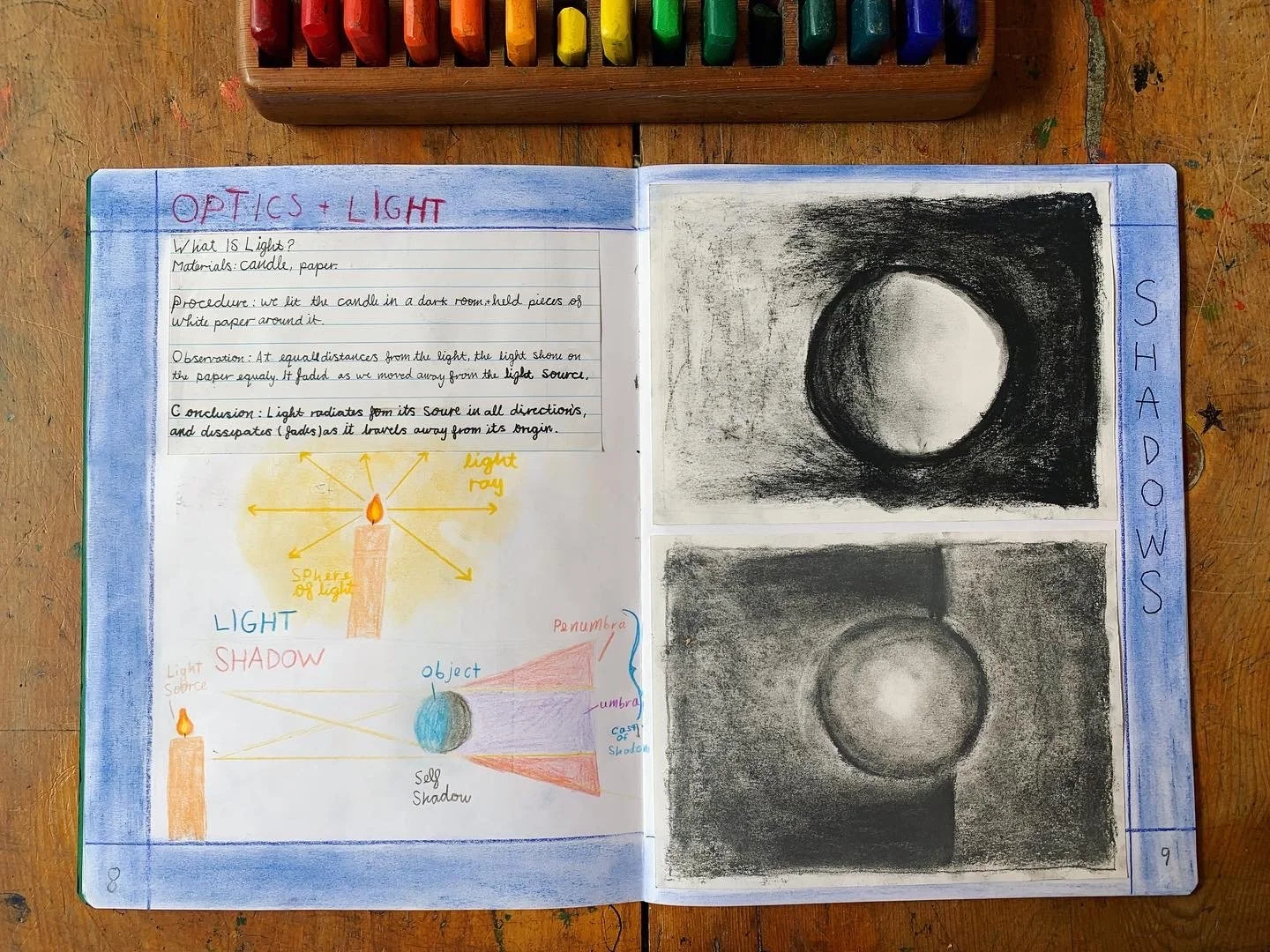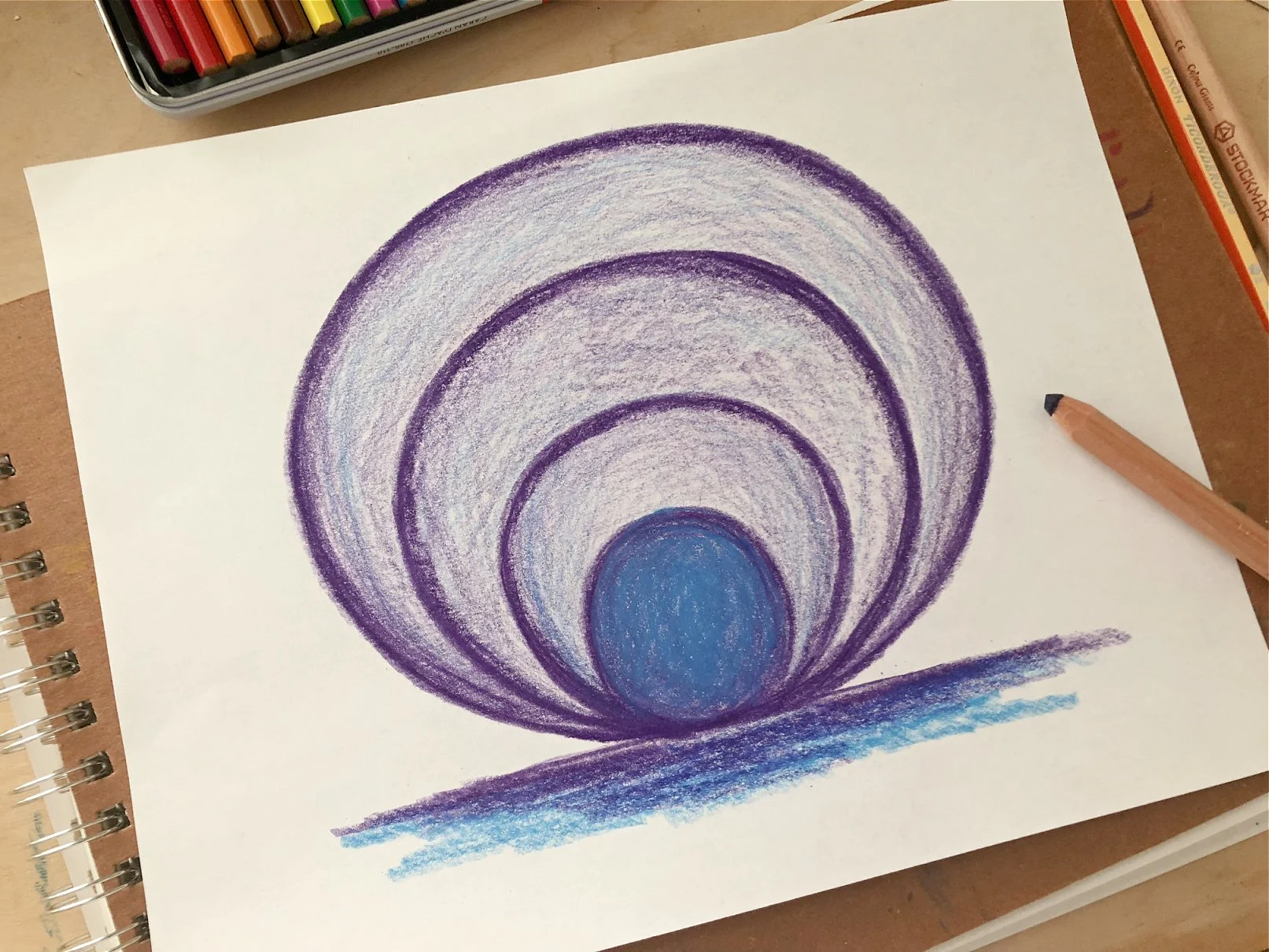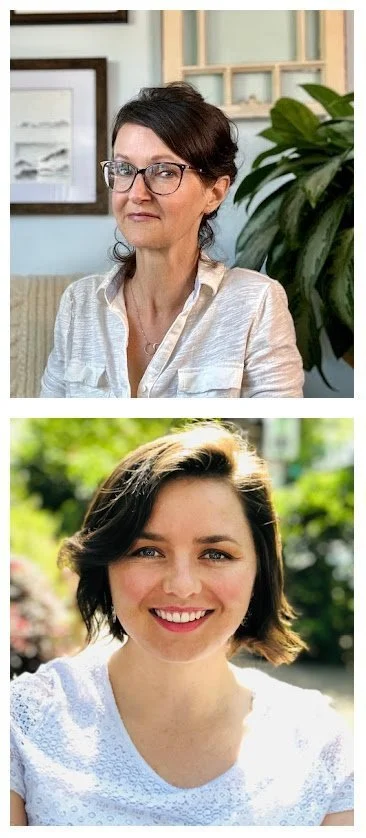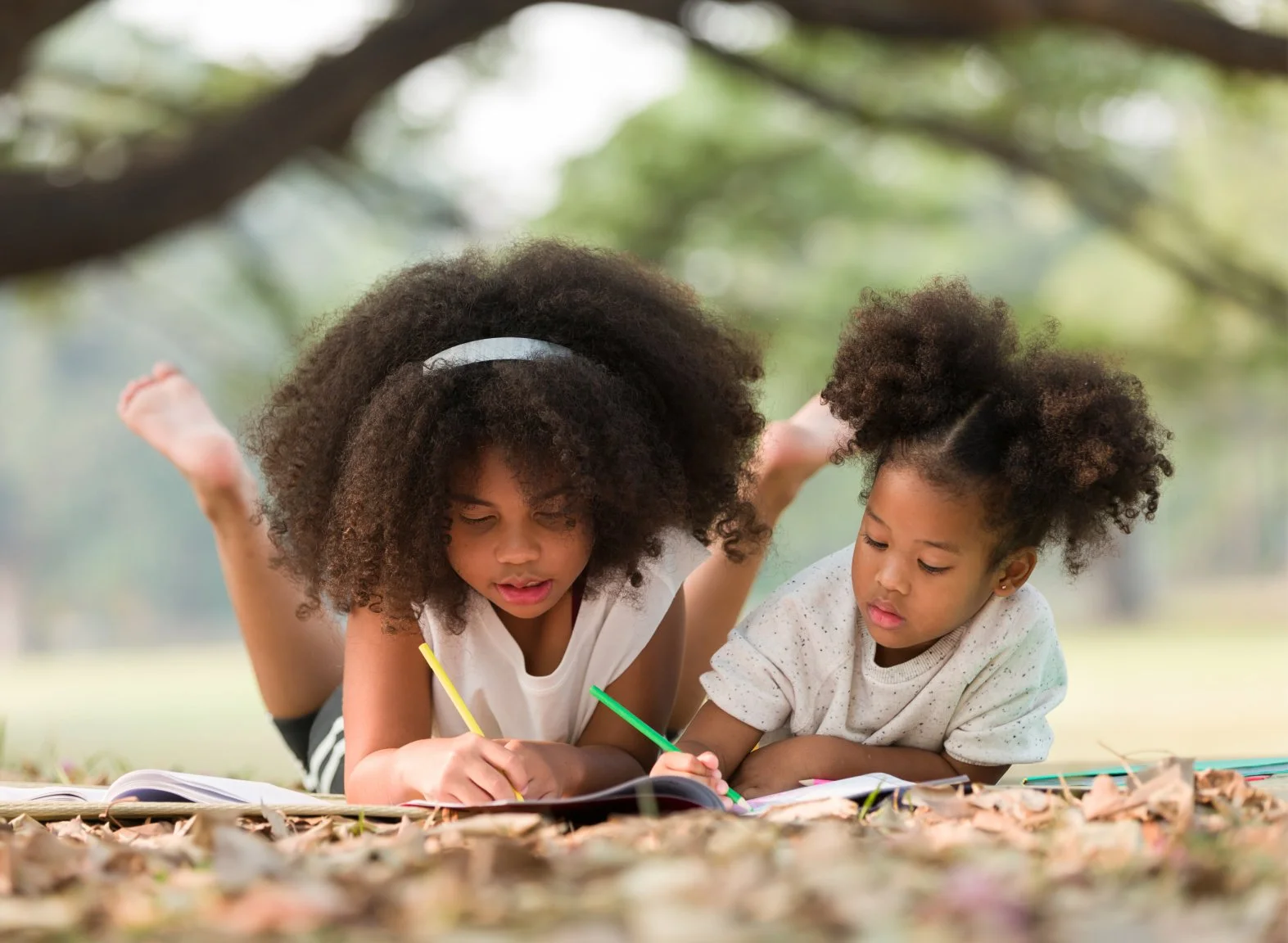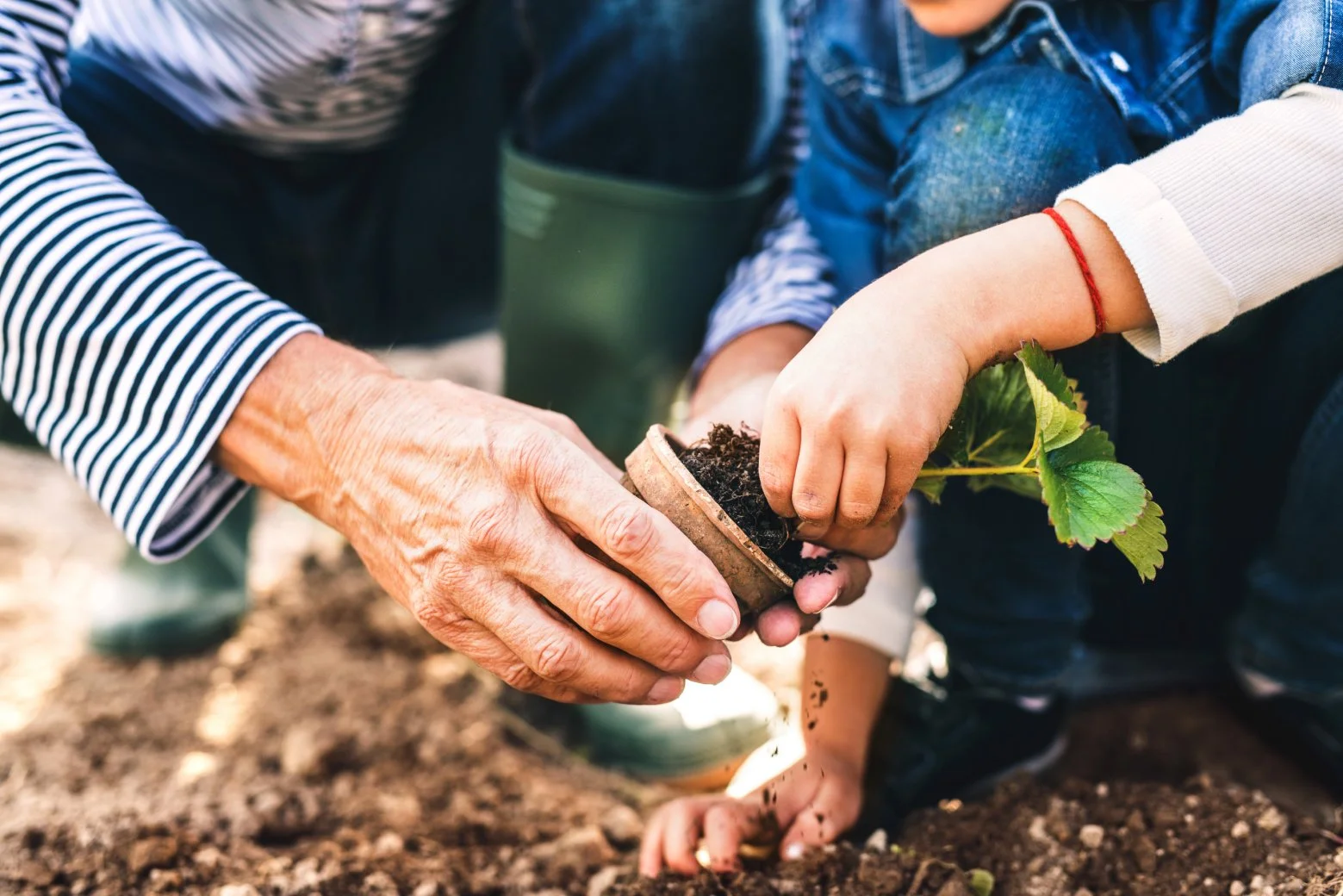
Waldorfish Blog
The Quiet Power of a Weekly Art Rhythm
Where can you find a place for art in the rhythm of your home life?
In the busyness of homeschooling life, it’s easy to feel like we’re constantly moving - navigating lessons, meals, dishes, and the emotional weather of a growing family.
Amid all that motion, creating (and returning to) a weekly rhythm that includes art can feel like a gentle anchor.
This rhythm doesn’t have to be elaborate. It doesn’t require hours of free time or a perfectly tidy table. It’s about carving out a small space, once a week, for quiet creativity. A simple drawing session, a watercolor moment, a bit of modeling with beeswax or clay. These moments aren’t “extra.” They’re essential. (And, if your rhythm is sometimes more of a gentle intention than a fixed schedule, that’s okay too. Even coming back to art ‘when you can’ has power.)
Engaging with art has many benefits for the whole family.
When art is woven into our weekly rhythm, it becomes more than just another subject to check off the list.
It becomes a shared moment of stillness. A way to regulate together. The repetition alone - of knowing art will come again next week - offers calm. It trains us (and our children) to expect beauty, to make space for process, and to feel safe in the creative unknown.
Over time, this rhythm builds a quiet kind of confidence. We learn to show up, even when we’re tired or distracted. And our children see us doing that - not perfectly, but consistently. They learn that creativity isn’t reserved for artists or experts. It’s something humans do - week after week, rain or shine.
Taking time to reconnect through art.
In that rhythm, we reconnect with each other. With the moment. And perhaps most importantly, with ourselves.
So if you’re looking for a way to ease the pace, to nourish the atmosphere of your homeschool, or simply to feel more grounded, consider this: a little art, once a week. No pressure. Just presence.
And let that be enough.
If you’d like some support creating your own weekly art rhythm, reach out and/or take a look at our Weekly Art Foundations course.
About the Author
Robyn Beaufoy is Waldorfish’s CEO, and a course instructor for some of our courses - Waldorf Art for Beginners, Weekly Art Foundations, and Simple Season. You’ll find her intuitive touches and influences throughout everything Waldorfish offers! Robyn has been in the world of education for over 25 years, with an MA in Education and a certification in Waldorf teaching - she also homeschooled both of her children. In 2012 Robyn co-founded Waldorfish.com, creating it with the vision of making Waldorf inspired-art and pedagogy more accessible, joyful, and doable for homeschoolers all over the world.
Why Art Is at the Heart of Waldorf Education (Even If You Don’t Feel Like an Artist)
If you’re new to Waldorf education, one of the first things you’ll probably notice is how art-full it is.
In Waldorf Education, art is everywhere!
From watercolor painting and crayon drawings to beeswax modeling and form drawing, it’s everywhere. And if you're anything like many of us, that might feel a little... intimidating. Maybe even a little frustrating. (“But I’m not an artist!” Sound familiar?)
But here’s the beautiful part: Rudolf Steiner, the founder of Waldorf education, didn’t put art into the curriculum to turn children into professional artists. He placed it there because he knew something essential - art builds the muscles needed for learning.
Let’s pause there for a second.
We tend to think of learning as something that happens in the mind. Reading, writing, memorizing facts and dates. But Steiner understood that learning is actually a full-body, full-being process. When children engage with artistic activity - whether it’s singing, painting, or sculpting - they’re not just being “creative.” They’re developing capacities that form the foundation for academic learning: concentration, perseverance, observation, fine motor skills, and a deepened connection to beauty and meaning.
In other words, art in the Waldorf curriculum isn’t extra. It is the curriculum.
Steiner often said that the arts awaken the “will” - that inner spark that allows a child to want to learn, to push through challenge, and to care about what they’re doing. He knew that when a child draws a picture of a story they’ve just heard, or moves their body through a geometric form, they’re not just decorating their lesson, they’re embodying it. That kind of learning sticks. It sinks in at a level far deeper than rote memorization ever could.
Take a deep breath, and get started!
So if you're feeling nervous about bringing art into your homeschooling rhythm, take heart: it's not about doing it perfectly. It's about showing up with curiosity and openness. It's about trusting the process - just like we hope our children will do.
You don’t have to be an expert artist. You just need to be willing to pick up the crayon, the brush, the modeling wax... and begin.
Because art isn’t just a “subject” in Waldorf education. It’s the vehicle for learning. And in the long run, it nurtures not only academic understanding, but also imagination, resilience, and joy.
And that? That’s worth a little mess on the table!
If you’d like some support creating your own weekly art rhythm, reach out and/or take a look at our Weekly Art Foundations course.
Robyn Beaufoy is Waldorfish’s CEO, and also a course instructor for Simple Season, Waldorf Art for Beginners, and Weekly Art Foundations. You’ll find her intuitive touches and influences throughout everything Waldorfish offers. Robyn has been in the world of education for over 25 years, with an MA in Education and a certification in Waldorf teaching - she also homeschooled both of her children for some of that time. In 2012 Robyn co-founded Waldorfish.com, creating it with the vision of making Waldorf inspired-art and pedagogy more accessible, joyful, and doable for homeschoolers all over the world.
More from Waldorfish…
The Human Form in Motion: Why Figure Drawing Belongs in the Middle Grades of Waldorf Education
Figure drawing can be a simple activity that provides meaningful impact.
By the time a Waldorf student reaches seventh and eighth grade, their curriculum takes a bold step into the world of ideas, invention, and individuality.
They study anatomy, physiology, physics, chemistry, art history, and revolutions - both industrial and ideological. The thread running through all these blocks? A deeper understanding of the human being - not only how we function, but how we think, evolve, and express ourselves in the world.
It’s no coincidence that this is also the time when figure drawing steps into focus in a new and meaningful way.
A Longstanding Thread, Now Evolving
Figure drawing has always had a place in Waldorf art education. It shows up in the second grade Saints drawings, fourth grade Man and Animal block, and sixth grade portrait studies. But in the middle school years, this thread weaves into something more intentional and mature.
Figure drawing is an ancient practice.
Seventh and eighth graders no longer draw the human figure as a character in a story or a part of a historical tale. Instead, the human figure becomes the subject itself. This shift mirrors the adolescent’s changing worldview. Just as they begin to examine themselves and their peers more deeply - physically, socially, emotionally - they’re asked to do the same on the page.
Here, artistic expression and realism come together in a new way. Students learn the proportions of the human body, how bones and joints support movement, and how posture and gesture communicate emotion. It’s a beautiful marriage of observation and imagination.
From Observation to Expression
In the middle grades, we often begin with gesture drawings - quick, expressive sketches that capture movement rather than detail. A person walking, reaching, twisting - these simple poses invite students to see the body not as a fixed form, but as something alive, dynamic, and expressive.
Proportional studies also begin here. Students explore relationships:
How many “head lengths” tall is an average adult?
How wide are the shoulders compared to the head?
Where do the wrists fall in relation to the hips?
But it doesn’t stop at measurement. These explorations naturally spark deeper conversations:
How does one communicate bravery with their body? Sadness? Anxiety? Confidence?
What does it mean when someone stands tall with arms relaxed at their sides versus hunched with a lowered head?
This is more than drawing—it’s social-emotional learning through art.
Don’t hesitate, give figure drawing a try!
A Crucial Conversation for the Middle Grades
This kind of artistic inquiry is especially meaningful in middle school. Students are developing new social awareness. They’re navigating friendships, boundaries, and identity. Understanding how humans communicate through non-verbal cues- and how to observe them objectively - is powerful. It fosters empathy and self-awareness.
Here, the educator’s role is to shift focus from scrutiny to celebration. We are not drawing to judge or idealize the body, but to appreciate its ability to balance, to express, and to move with intention
Bringing in Art History & Storytelling
Art history naturally enriches figure drawing work. Classic paintings and sculptures offer timeless examples of how gesture communicates.
What emotion was Emanuel Leutze trying to convey by painting George Washington standing tall in profile, chin up, gaze forward in Washington Crossing the Delaware?
What story were early cave artists telling when they etched upright warriors, spears in hand, into stone?
What does a dancer’s curved spine and extended arms express in Degas’ sketches?
There are no wrong answers - only opportunities for discussion.
This is what figure drawing in middle school offers: a chance to merge observation, interpretation, and personal insight.
For Parents and Educators Supporting This Work
Process over product, and enjoy!
If you feel unsure about your own drawing skills, take heart. You don’t need to be a professional artist to guide this work! What matters is modeling curiosity, showing up alongside your child, and being open to discovery.
At Waldorfish, we teach figure drawing as a progression - one that’s developmentally appropriate and inviting, not intimidating. In our Diving Deeper course (the next step after Weekly Art Foundations), we offer guided lessons in gesture drawing, proportion, and expressive form - designed with middle schoolers and their parents in mind.
Ready to Take the Next Step?
If you’re looking to deepen your middle schooler’s Waldorf art education, explore our Weekly Art Diving Deeper course.
It’s the perfect companion to the growth, complexity, and creativity blooming in your students at this stage.
About the Authors
Robyn Beaufoy is Waldorfish’s CEO, and also a course instructor for Simple Season, Waldorf Art for Beginners, and Weekly Art Foundations. You’ll find her intuitive touches and influences throughout everything Waldorfish offers. Robyn has been in the world of education for over 25 years, with an MA in Education and a certification in Waldorf teaching - she also homeschooled both of her children for some of that time. In 2012 Robyn co-founded Waldorfish.com, creating it with the vision of making Waldorf inspired-art and pedagogy more accessible, joyful, and doable for homeschoolers all over the world.
Caitlin Amajor is Waldorfish’s course instructor for Geometry grades 5 & 6, and Botany, as well as our Administrative Assistant. From a young age, Caitlin has been immersed in Waldorf education, attending a Waldorf school from K-8. After receiving a BA in History, Caitlin gained her certification in Waldorf teaching, and spent seven years as a Waldorf class teacher in the upper grades. With a special fondness for watercolor painting and geometry, Caitlin loves bringing Waldorf education to her students all over the world, and seeing their own individuality and style bloom from the curriculum!
Nature Journaling in Fifth Grade: More Than Just a Drawing Lesson
In Waldorf Education, science is taught by doing and observing!
In Waldorf education, fifth grade marks a special shift - one where science becomes more focused, more intentional.
Beginning with Botany in the fifth grade and progressing to Physics, Chemistry, Geology, Anatomy, and more in the later years, students are invited into the world of science not through textbooks or lectures, but through phenomenology—an approach that begins with observation and lived experience.
In practical terms, this means students are encouraged to experience scientific phenomena directly, often through demonstrations or hands-on activities, and then draw their own conclusions. No memorizing facts just to regurgitate them—this is science experienced through the senses.
One of the most beloved activities in the fifth-grade Botany block is something called Nature Sketching (sometimes also called Nature Journaling). It’s simple on the surface: students take their colored pencils, etc. and sketchbooks outdoors, find one subject that captures their attention - a flower, a leaf, even a curled root peeking out of the earth - and spend time carefully observing and drawing it.
But here’s the thing: it’s not about the drawing. Not really.
Nature sketching provides a moment of quiet in a busy, fast world.
Sure, students are encouraged to draw what they see with care - matching color, texture, shape, position - but the true goal is deeper. We’re helping them learn to slow down, to really look, and to begin noticing the small details that might otherwise go unseen.
What does the flower smell like? What’s its texture? How many petals? What’s the light doing at that time of day?
This moment of quiet, focused attention is a rare gift in our fast-paced world. And it turns out, it’s doing more than just building observation skills. Nature journaling also introduces two incredibly important ways of thinking that scientists and artists alike rely on: distributed cognition and metacognition.
Let’s unpack those.
Distributed cognition is a fancy way of saying: sometimes, our brains need a little help keeping track of everything. That’s why we use things like calendars, grocery lists, or calculators - they’re all tools that “share the load” of thinking. In the same way, a nature journal becomes a thinking partner. Instead of trying to remember every detail of a flower or the texture of a leaf, the student writes it down or draws it. Their journal becomes an extension of their memory and attention - just like a scientist’s field notebook.
And then there’s metacognition - thinking about our thinking. As John Muir Laws puts it, “Thinking about our thinking helps us think better.” When students go back and review their nature sketches and notes, they’re not just remembering what they saw; they’re also reflecting on how they observed, what they were curious about, and how their perspective might have changed. That’s metacognition in action - and it’s a powerful habit to develop.
Nature sketching is a multi-faceted, powerful tool.
What’s more, the simple act of nature sketching engages a whole web of skills: fine motor skills, attention to detail, language arts (through labeling, note-taking, or journaling), even basic quantitative skills like counting, measuring, and comparing. And every time a student tries something new - maybe they’ve never blended colored pencils to show shading before, or never really paid attention to the shape of a leaf - their brain is making new connections. That’s neuroplasticity at work: the brain growing and adapting through experience.
So while it may look like just a quiet moment with paper and pencil out in the garden or forest, Nature Journaling is a deceptively powerful tool - one that builds scientific thinking, strengthens artistic observation, supports language and reflection, and even grows the brain itself!
And best of all? It invites the student into a lifelong relationship with the natural world - one quiet sketch at a time. And what our students learn to love, they will strive to protect.
More from Waldorfish:
About the Authors
Robyn Beaufoy is Waldorfish’s CEO, and also a course instructor for Simple Season, Waldorf Art for Beginners, and Weekly Art Foundations. You’ll find her intuitive touches and influences throughout everything Waldorfish offers. Robyn has been in the world of education for over 25 years, with an MA in Education and a certification in Waldorf teaching - she also homeschooled both of her children for some of that time. In 2012 Robyn co-founded Waldorfish.com, creating it with the vision of making Waldorf inspired-art and pedagogy more accessible, joyful, and doable for homeschoolers all over the world.
Caitlin Amajor is Waldorfish’s course instructor for Geometry grades 5 & 6, Botany, and Geology, as well as our Administrative Assistant. From a young age, Caitlin has been immersed in Waldorf education, attending a Waldorf school from K-8. After receiving a BA in History, Caitlin gained her certification in Waldorf teaching, and spent seven years as a Waldorf class teacher in the upper grades. With a special fondness for watercolor painting and geometry, Caitlin loves bringing Waldorf education to her students all over the world, and seeing their own individuality and style bloom from the curriculum!
Looking for something?
Welcome to Waldorfish! We started this adventure in 2012 out of a desire to make Waldorf training more accessible to class teachers in remote locations and to homeschooling families everywhere! Read more, click here.
WE WON! Our Weekly Art courses were voted “best interactive art program.” Learn more about the award, here.
A few of our most popular blog posts:
